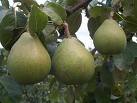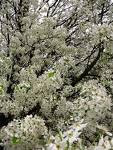SCARLET PIMPERNEL, ANAGALLIS ARVENSIS
The Scarlet Pimpernel is a common weed in Britain, the rest of Europe and temperate zones around the world. It is a member of the Primulaceae family of plants so is related to the primrose and the cowslip. Like the Tickle Me plant it closes at night, or actually in this case its flowers open around 8 or 9 am and close by 3 pm, and sooner than that if rain threatens. It is more shrinking in this respect than the violet. When the flowers close they are not visible amongst the leaves as they are only red-orange on the upper side of the petals. Because it closes when rain threatens it is called the Shepherd’s Barometer or the Poor Man’s Weatherglass. In Old English it was known as Bipinella. Perhaps because of its ability to blend in unnoticed with the leaves when closed, the Scarlet Pimpernel was the name given to Charles Dickens’ hero who rescued members of the French aristocracy from the guillotine in “A Tale of Two Cities.”
 Its leaves are toxic and dangerous to animals, although birds love the seeds. These are produced after the flowers have died and the stem, which was erect during flowering time, bends backwards when the seed pods form. The flowers do not contain honey but attract insects for pollination purposes with the violet hairs on the stamens.
Its leaves are toxic and dangerous to animals, although birds love the seeds. These are produced after the flowers have died and the stem, which was erect during flowering time, bends backwards when the seed pods form. The flowers do not contain honey but attract insects for pollination purposes with the violet hairs on the stamens. The little flower has been used for centuries as a cure-all with Pliny writing that it was good for liver complaints and Dioscorides (1AD) called it anagallis, from the Greek, anagelao meaning to laugh, as it dispelled the depression that followed liver complaints. The Greeks used its juice to cure eye problems including cataracts, and Gerard and Culpeper agreed that it was good for the eyes mixed with honey and dropped into them. There is an old rhyme which says,
“No heart can think, no tongue can tell,
The virtues of the pimpernel.”
It was thought that it could get rid of melancholia and make people happy. Culpeper believed that it would cure the bites from poisonous creatures and rabid dogs, and Gerard used it as one of the ingredients in a preparation called “Diacorallion” as a treatment for gout. Interestingly it is used to treat gout in parts of India in traditional medicine today. Gerard thought that the scarlet Pimpernel was the male flower with the rarer blue variety being the female flower. (Of course they are different genuses.) In his British Herbal of 1756 John Hill wrote that the whole plant could cure epilepsy and elsewhere there is written assertions that the flowers alone could cure this disease. Culpeper writing in the 17th century said that it was useful as a strong infusion to promote sweating during fevers, and the Physicians of Myddfai used it as an ingredient for bath water during intermittent fevers. Their remedy was to “Take the mugwort, dwarf elder, tutsan, amphibious persicaria, pimpernel, butcher’s broom, elder bark and the mallow, and boiling them as well as possible in a pot or cauldron. Then take the water and the herbs and add them to the bath.”
 They used it in other preparations including one which included Common Speedwell for abdominal pains, and this rather bizarre cure for infertility. It is included for its curiosity value only!
They used it in other preparations including one which included Common Speedwell for abdominal pains, and this rather bizarre cure for infertility. It is included for its curiosity value only! “A sterile woman may have a potion prepared for her by means of the following herbs, viz:- St John’s Wort, yew, agrimony, amphibious persicaria, creeping cinque foil, mountain club moss, orpine and pimpernel, taking an emetic in addition.”
Another rather strange one is for profuse menstruation, and it shows how little these old physicians knew about the workings of the body. The prescribed ingredients were
 “the reddish bastard balm, small burdock, orpine, stinking goose foot, pimpernel, water avens, with the ashes of a hart’s horns that has been killed with his antlers on, boiling them as well as possible in red wine, straining the liquor carefully and drinking it daily till it is finished, abstaining (the while) from stimulating food. Being restrained by the above means, the blood will be habitually diverted to the thighs and ancles.”
“the reddish bastard balm, small burdock, orpine, stinking goose foot, pimpernel, water avens, with the ashes of a hart’s horns that has been killed with his antlers on, boiling them as well as possible in red wine, straining the liquor carefully and drinking it daily till it is finished, abstaining (the while) from stimulating food. Being restrained by the above means, the blood will be habitually diverted to the thighs and ancles.” The whole plant can be gathered in June when the leaves are in peak condition, and dried, although it is believed that the fresh plant is more effective. Apart from its uses in medicine, it has been used to deflect evil charms including he evil eye. It is said that the leaves of the plant were eaten as salad in Europe, but as they are toxic, this is doubtful. It has however been used for rheumatism in the USA in the early 20th century, and the expressed juice is allegedly good for the liver and spleen.
 Clinical trials have shown that this plant has antioxidant and antifungal and antiviral (against herpes simplex) properties. It is also thought to be good for gastro-intestinal complaints, acne, eczema and wounds, for the liver and kidneys and the respiratory tract. However, much more research needs to be done on this shy little plant.
Clinical trials have shown that this plant has antioxidant and antifungal and antiviral (against herpes simplex) properties. It is also thought to be good for gastro-intestinal complaints, acne, eczema and wounds, for the liver and kidneys and the respiratory tract. However, much more research needs to be done on this shy little plant.

















































